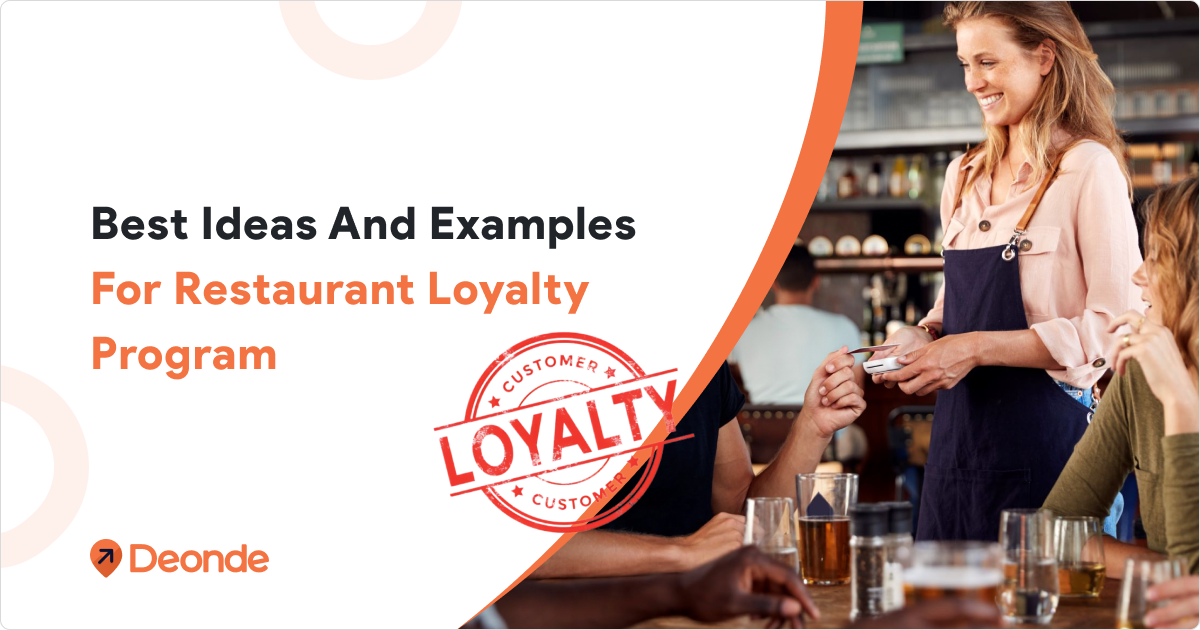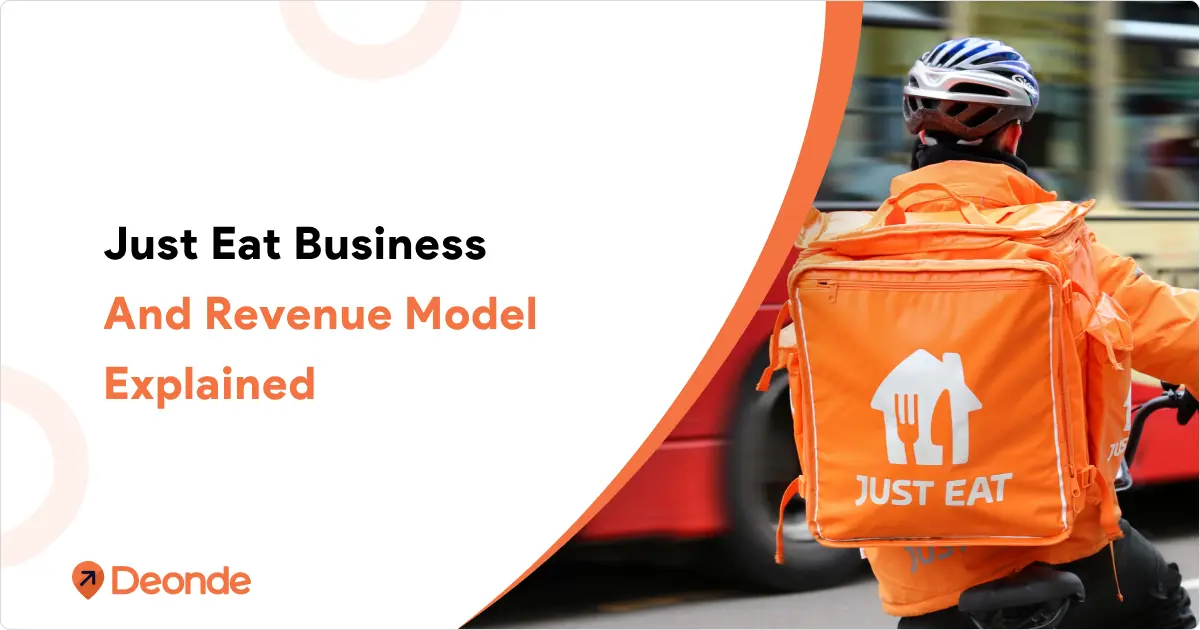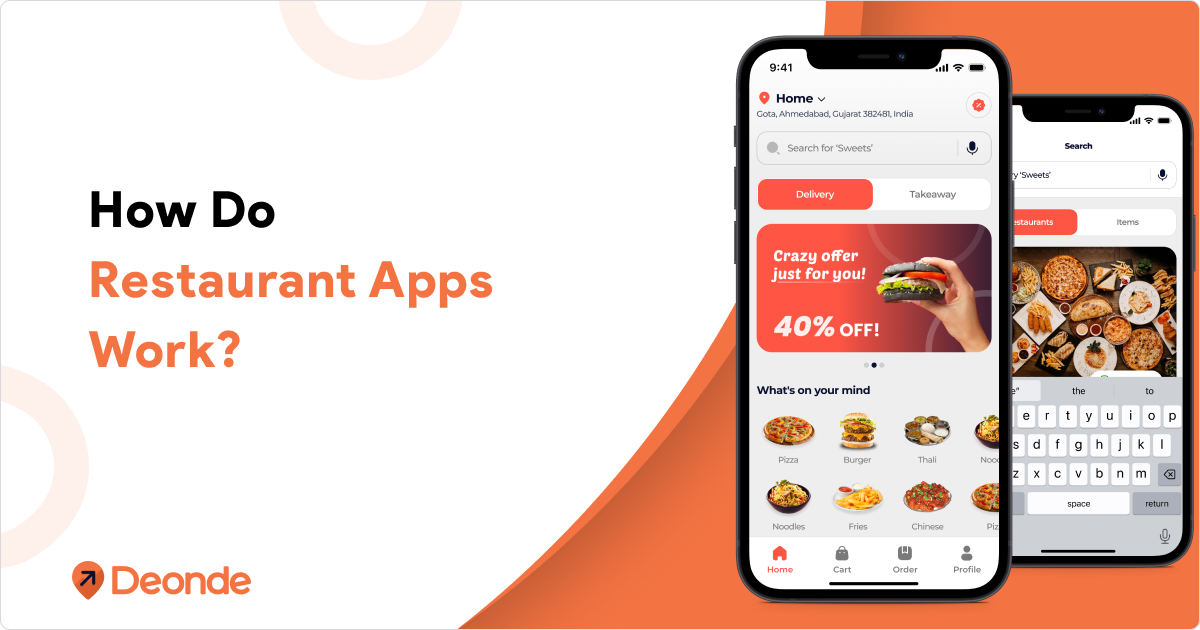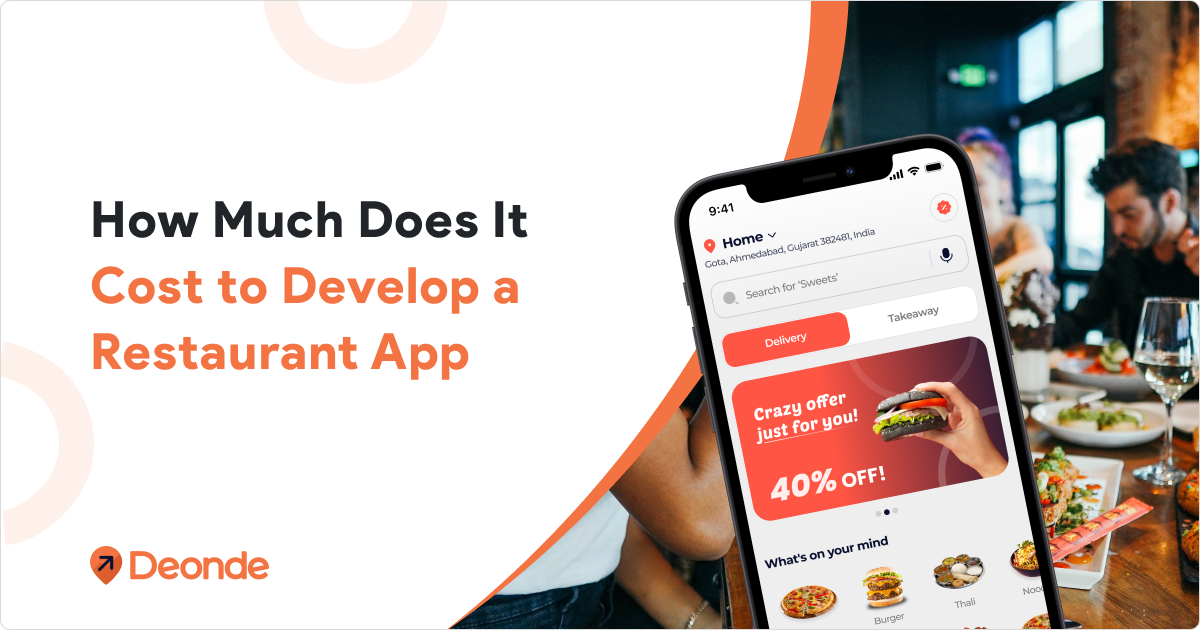If you own a restaurant business, here are some facts you should know:
There are more than 200,000 fast-food restaurants in the United States alone.
The number of fast-food restaurants in the US has grown by 1.7% per year on average over the five years between 2018 and 2023.
According to a report from the Indian Express, India’s food service industry is expected to reach $79.65 billion by 2028.
It is evident from above that restaurant businesses today are operating in a fiercely competitive market, and just serving tasty food isn’t going to cut it anymore.
You need to cultivate customer loyalty to create a lucrative brand that keeps customers returning for more.
But the question remains: How can restaurant businesses nurture customer loyalty?
The simple answer is—through restaurant loyalty programs. But what are they and how do they work? In this blog, we’ll be answering all of this and more.
We’ll start by looking at some easy-to-use restaurant loyalty programs and uncovering the secret behind their strategies. We’ll also see how restaurant loyalty programs contribute to business growth.
Let’s dive right in.
What are Restaurant Loyalty Programs?
Restaurant loyalty programs are structured marketing strategies that reward customers and give them an incentive to dine at your restaurant again.
Restaurant loyalty programs are generally designed to encourage repeat business by allowing customers to earn points for each purchase.
These points or rewards can later be redeemed for price-off or cash-back discounts.
The main purpose of these point-based restaurant loyalty programs is to retain customers and increase their lifetime value.
By incentivizing customers to return, restaurants can build a loyal clientele.
We don’t need to tell you how important it is to have a loyal consumer base, as they bring consistent business and boost restaurant credibility through word-of-mouth referrals.
Types of Loyalty Programs for Restaurants
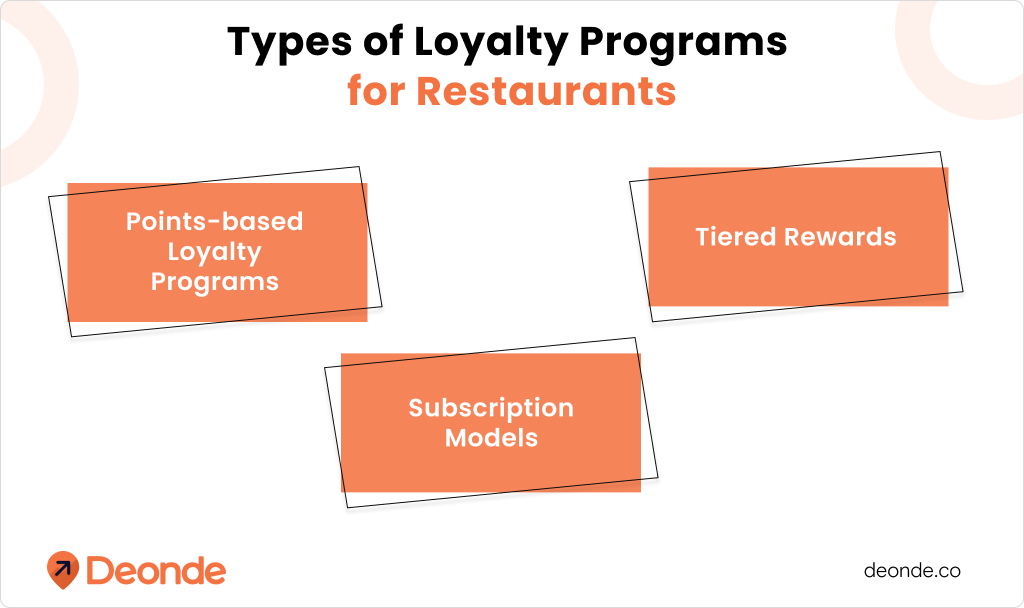
The point-based loyalty system is the most common and widely used among restaurant businesses.
However, today, restaurants tailor their loyalty programs based on a variety of factors: their business model, customer demographics, and retention rates.
If you haven’t decided upon a loyalty program for your restaurant business, here are some options to consider:
Points-based Loyalty Programs
Under this system, restaurant customers accumulate points for spending—which can be both in-person or online dining. These points are stored in the user’s account and can be redeemed for rewards within a certain period. These systems work best for larger chains, as customers can earn and redeem points at any location.
Tiered Rewards
As per this model, customers are allowed to progress through different tiers based on accumulated points or purchases. This means the more a consumer spends, the more valuable their rewards get.
Unlocking rewards at each level has a game-like feel and is best suited for cafes or quick-serve restaurants that usually cater to a younger demographic.
Subscription Models
Here, customers pay a recurring fee for exclusive perks, discounts, or experiences like free online delivery or free items. This approach can be highly successful for high-end or fine-dining establishments, fostering a sense of exclusivity and luxury.
Examples of Popular Restaurant Loyalty Programs Software
Now that we’ve seen the types of restaurant loyalty programs, let’s look at examples of some popular restaurant loyalty program software:
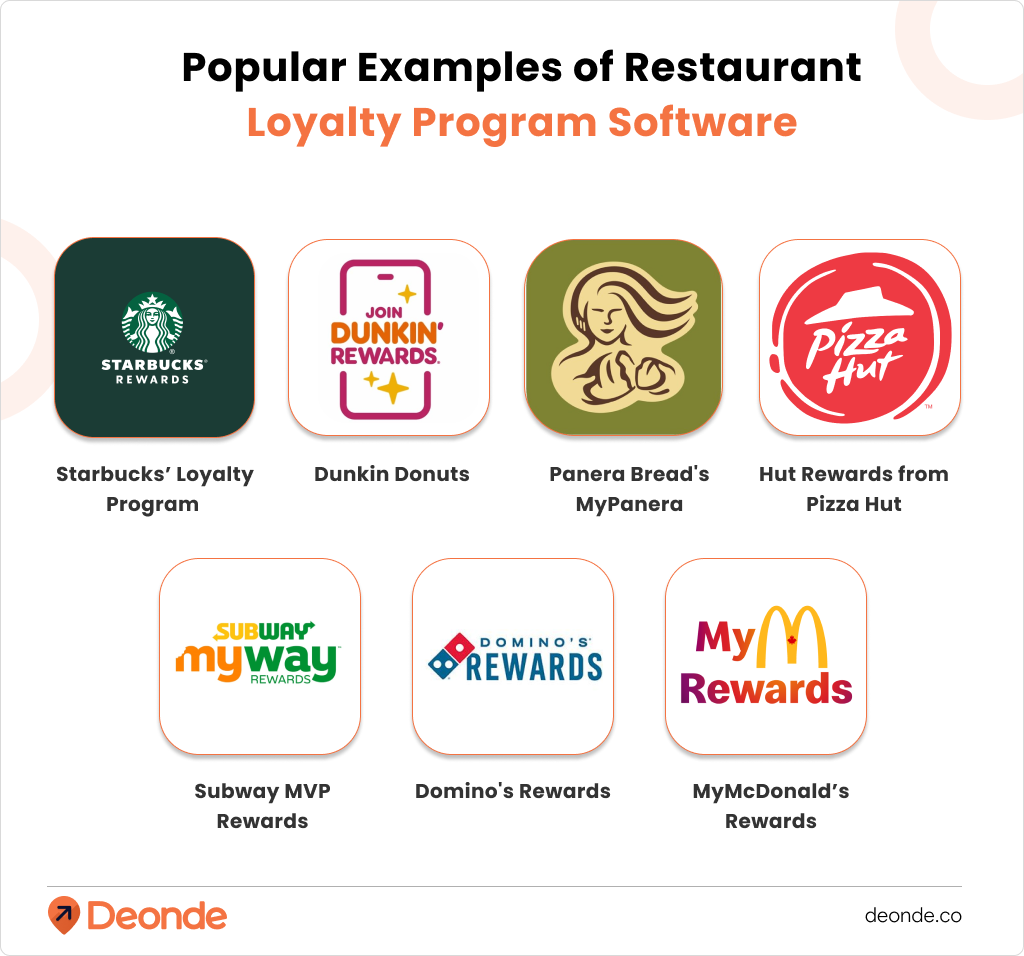
1. Starbucks’ Loyalty Program
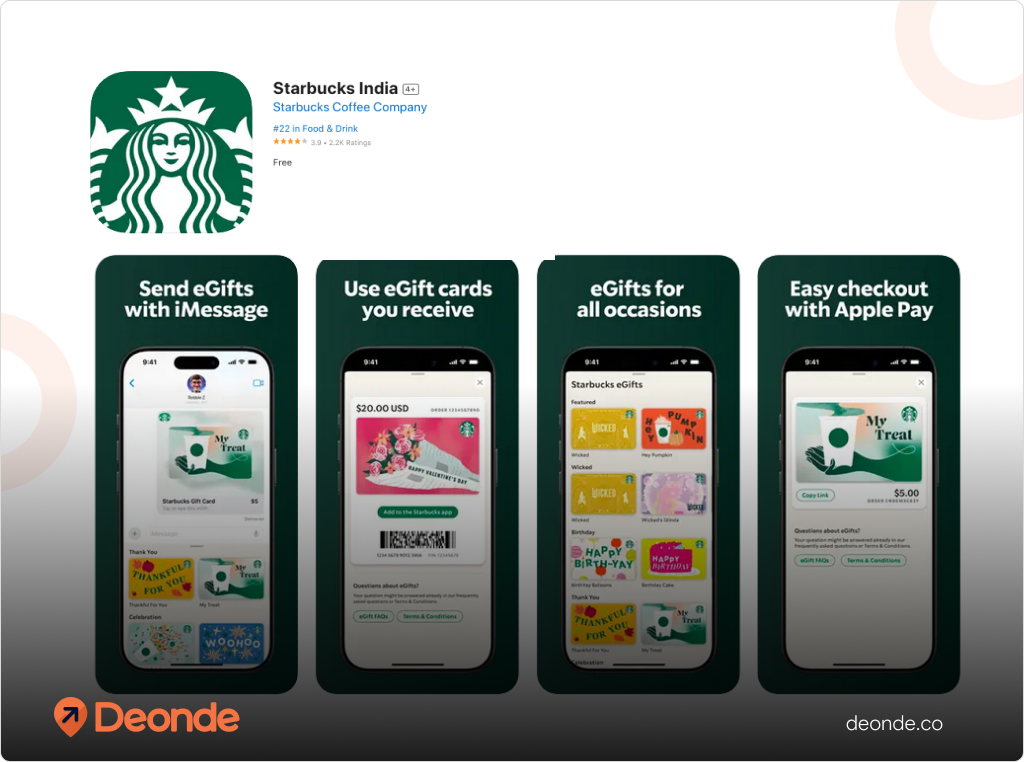
To retain customers and prevent them from switching to other popular brands, Starbucks launched a loyalty program for its customers. In the US alone, Starbucks has 30.4 million members registered to its loyalty program—making it one of the most successful customer loyalty programs ever introduced.
Starbucks Rewards Program is available on the ordering mobile app as well as a prepaid card which can be used to pay for items.
Customers using Starbucks Rewards Visa Card earn their loyalty points faster than when paying with traditional bank cards. Several features and benefits are available for customers registered to the rewards program:
- Free add-ons, drinks, and food items
- Order ahead and pay using the smartphone app
- Free refills on brewed coffee and tea
- A free birthday reward every year
- Bonus reward days
Repeat visits from Starbucks Rewards members generate a whopping 40% of the brand’s UK revenue. Further, Starbucks noticed a sharp 7% uptick in sales post the launch of their loyalty program.
2. Dunkin Donuts
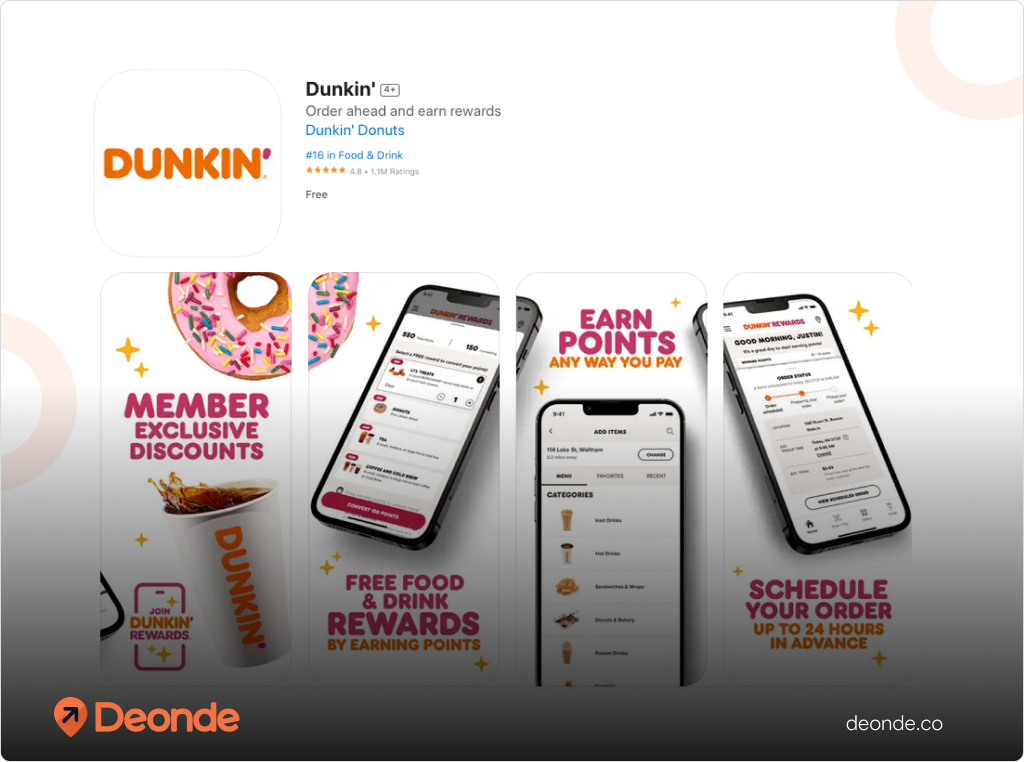
Dunkin’ Donuts’ DD Perks program rewards customers with points for every purchase (5 points per dollar).
When customers accumulate 200 points, they get a chance to earn a free drink of any size.
Plus, for three weekly purchases, members get an additional free beverage.
DD Perks also offers frequent promotions, such as free donuts or coffee, with qualifying purchases and bonus points opportunities.
Mirroring Starbucks’ success, Dunkin’ partnered with Masterpass to offer co-branded payment cards, boosting customer retention and spending. The program’s popularity has driven over 12 million downloads of the Dunkin’ app.
3. Panera Bread’s MyPanera
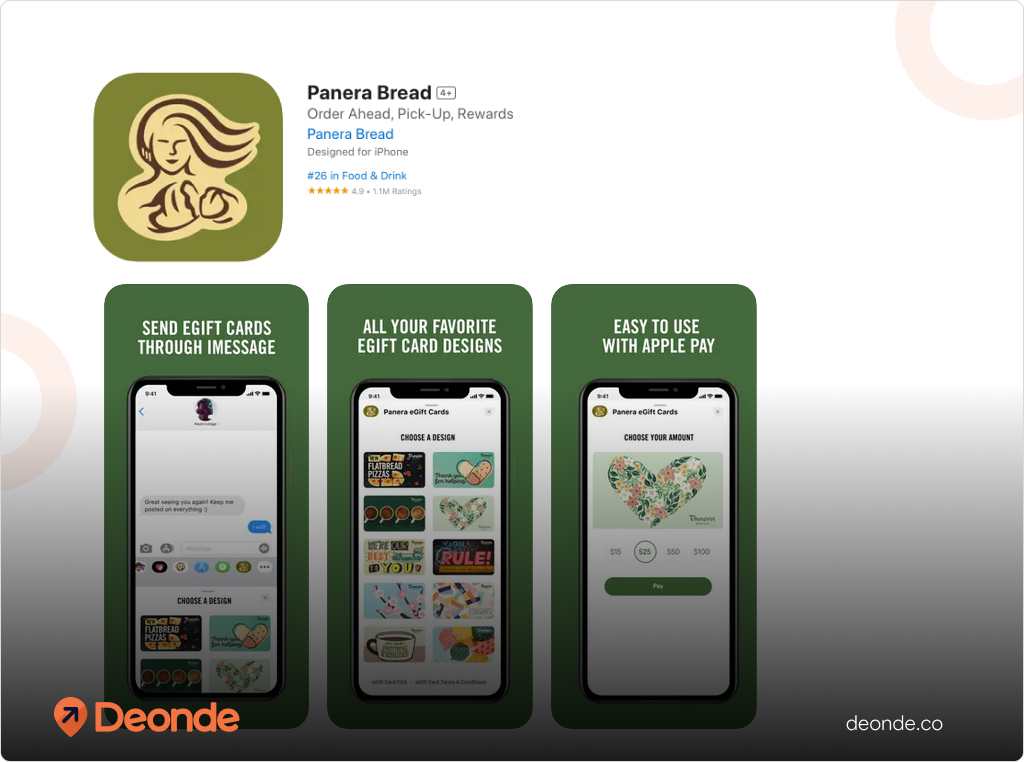
Another successful example of a growing restaurant loyalty program is MyPanera Rewards by Panera Bread Company.
MyPanera Rewards is one of the oldest customer loyalty programs on this list, as it started in 2010—even before they had a mobile app. Today, MyPanera has grown to encompass over 52 million members, making it one of the largest loyalty programs in the restaurant industry.
More than 50% of transactions now come from the MyPanera loyalty program members.
Panera Bread’s loyalty program is all about getting to know their customers. Over time, its loyalty program members receive personalized treats and rewards, from free bagels to savings on salads and sandwiches.
It is interesting to note that the MyPanera Rewards system isn’t point-based. Instead, the program rewards customers based on their number of visits.
A key benefit of the program is its built-in referral system: members can share rewards with friends, encouraging them to become new customers.
4. Hut Rewards from Pizza Hut
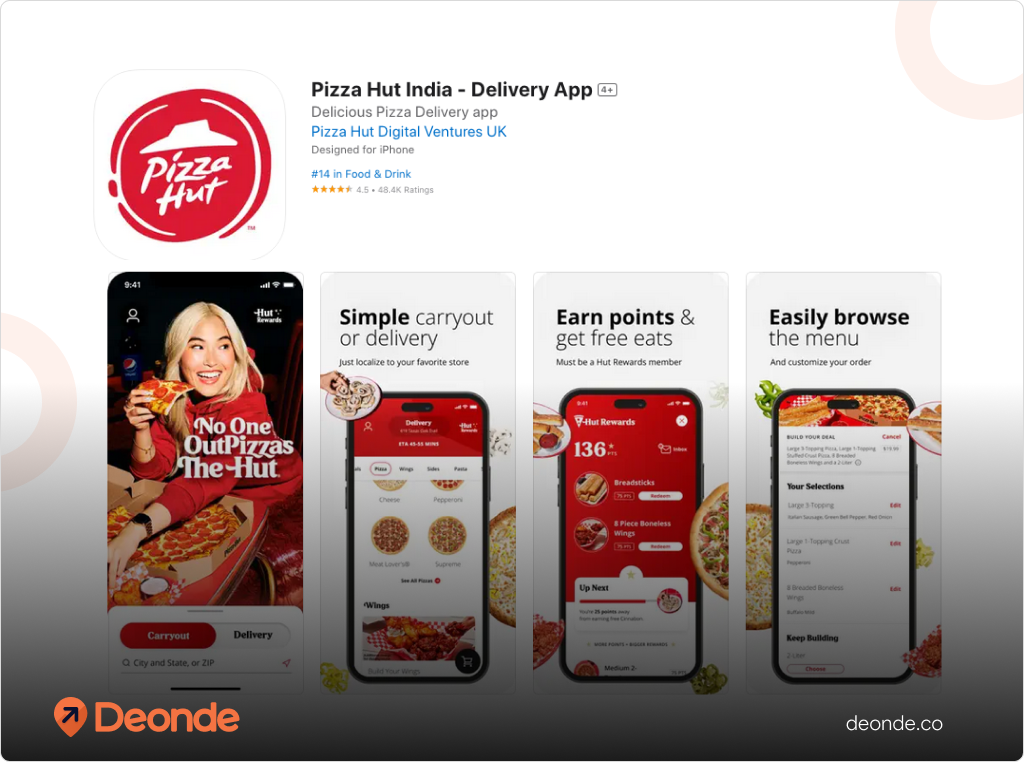
Pizza Hut’s Hut Rewards program was launched in 2017 to boost customer loyalty and visit frequency.
Both new and existing customers can easily enroll online. Every member earns two points for every dollar spent online.
Unlike some competitors, Hut Rewards offers a free pizza with as little as one visit, and points are earned on every dollar spent.
The program also includes exclusive offers and birthday rewards and is available for online and mobile orders (delivery or carryout).
The Hut Rewards loyalty plan is simple and easy to use. The dollar-to-point ratio is easy to calculate and with no hidden rules.
5. Subway MVP Rewards
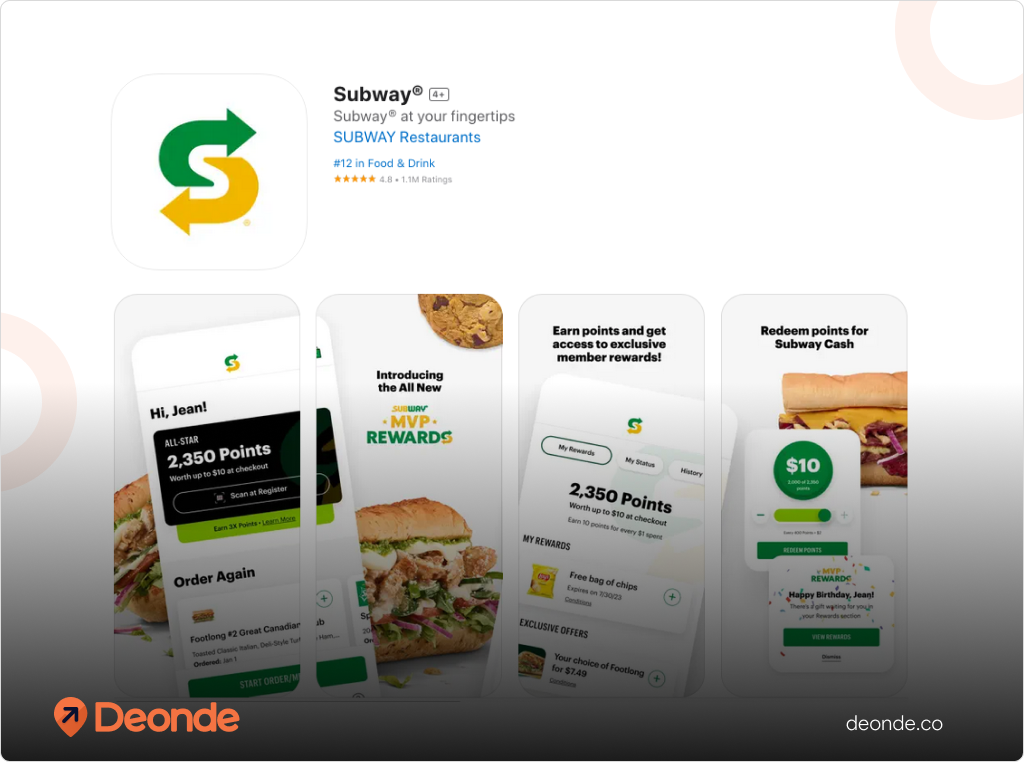
Launched in 2023, Subway’s MVP Rewards program replaced the MyWay program, offering a personalized discount system to its 32+ million members.
MVP Rewards transitioned from a token-based system to points, introduced Subway Cash, enhanced benefits, and improved the app and website experience.
The program features three tiered memberships: Pro, Captain, and All-Star, offering escalating rewards and benefits based on annual spending.
Members are automatically enrolled and must re-qualify for their tier each year.
Birthday rewards also increase with each tier. For instance, pro members get a free cookie, while captains receive a free cookie along with a 20-ounce drink. On the other hand, All-Stars enjoy a free 6-inch sub.
6. Domino’s Rewards
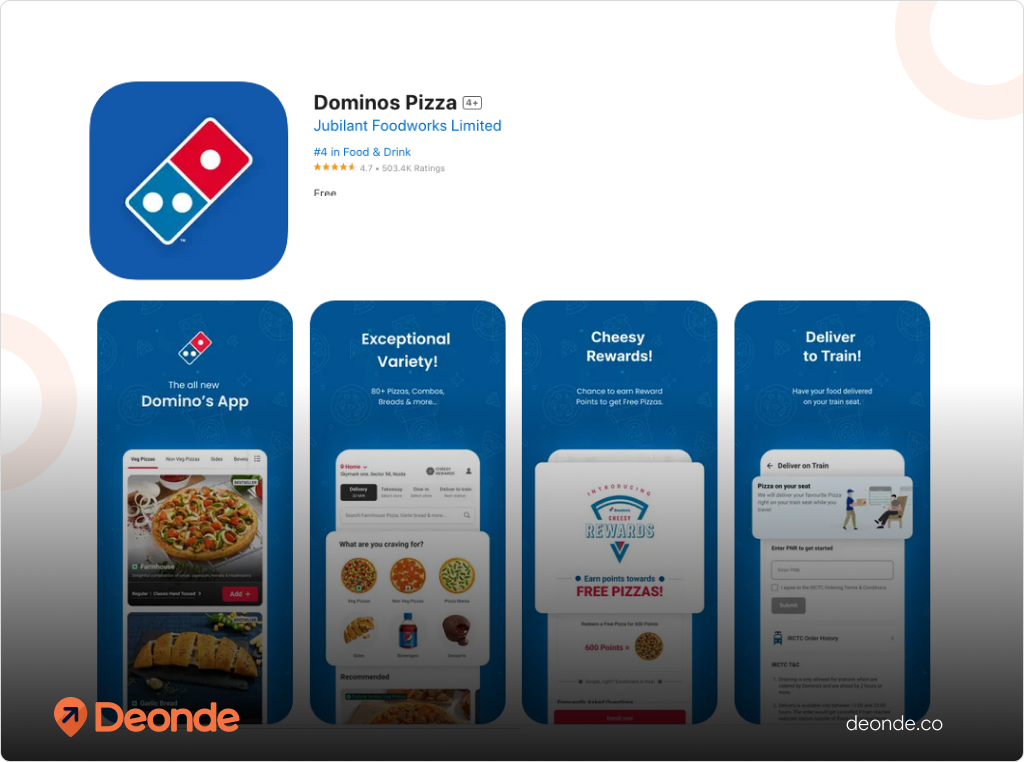
Domino’s rewards its loyal customers through a straightforward loyalty program.
Members earn 10 points for every order worth $5 or more placed online or via the app. After accumulating 60 points, they can redeem them for a free pizza.
Smaller rewards are also available for 20 and 40 points, such as a 20-ounce drink or bread twists.
Domino’s also provides members exclusive deals and special discounts during member appreciation weeks. The simplicity of Domino’s reward system encourages repeat orders and keeps customers connected to the brand.
7. MyMcDonald’s Rewards
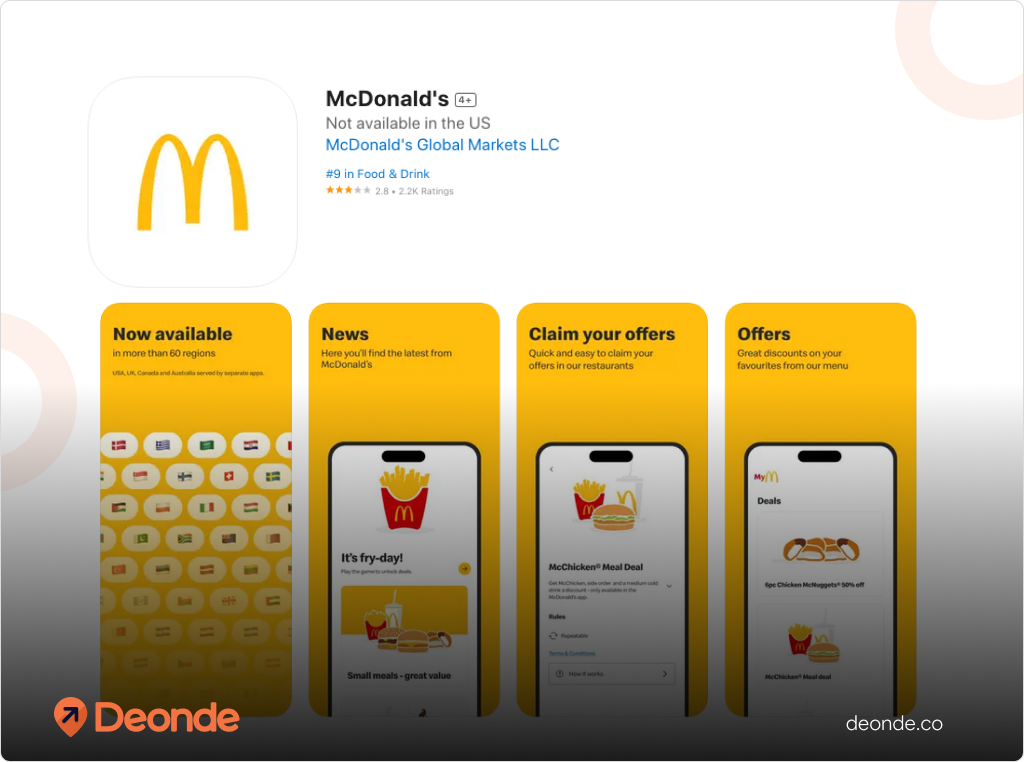
Designed for simplicity and ease of use, McDonald’s rewards program offers a compelling way for customers to earn free food.
Customers earn 100 points for every dollar spent, redeemable for free menu items.
The program features four tiers (1500, 3000, 4500, and 6000 points) unlocking increasingly valuable rewards from a selection of 16 items.
Customers can also earn bonus points, such as 1500 points for linking a credit or debit card to the McDonald’s app, enough for a free McChicken or Cheeseburger with their first app purchase. The program’s simplicity and ease of use are key to its widespread use and success.
In 2023, MyMcDonald’s Rewards Program continued to be a key driver of sales, generating over $20 billion in sales.
Restaurant Loyalty Program Ideas
As seen above, all major eatery brands and restaurants have implemented a restaurant loyalty program, as they are a great way to reward customers and encourage them to keep coming back.
Here are some ideas for your restaurant’s loyalty program:
For your restaurant loyalty programs, consider a points-based system (like Starbucks) where customers earn points for every dollar they spend. Such points can be redeemed for discounts, free appetizers, entrees, or desserts.
You can also create tiers (Like Subway) with increasing rewards as customers accumulate more points. Some examples of tiered benefits include priority in-house dining, access to exclusive discounts, birthday rewards, and more.
Further, add referral rewards where customers gain points for referring new diners.
Try implementing your restaurant loyalty program using a mobile app where customers can track their points, receive exclusive offers, and easily order online.
You should also consider partnering with other local businesses to offer joint promotions or discounts to loyalty program members.
Pro Tips:
- Keep it simple. Make the program easy to understand and participate in.
- Promote it — let your customers know about the program through social media, email marketing, and in-house staff/standees.
- Make it valuable. Offer rewards that customers actually want.
- Track your results. Monitor the program’s performance and make adjustments as needed.
Restaurant Loyalty Program Statistics
Restaurant loyalty programs deliver measurable returns by increasing customer retention rates and average transaction values.
Studies show that a 5% increase in customer retention can increase profits between 25% and 95%.
Loyal customers also tend to spend more than first-time visitors—often up to 67% more per transaction.
According to Antavo’s Global Customer Loyalty Report 2024, 90% of loyalty program owners reported a positive return on investment, with the average ROI value being 480%.
Isn’t this data compelling? So, if you too are ready to drive repeat business and increase your restaurant business revenue, then you need Deonde’s easy-to-use Restaurant Loyalty Management System.
It helps you build lasting customer relationships by offering personalized rewards and targeted promotions.
Deonde’s customizable SaaS-based platform integrates seamlessly with your existing POS.
Get started now and see the difference!
Conclusion
As seen in this blog, restaurant loyalty programs boost customer retention and revenue by offering customers an incentive to shop again and again. These incentives range from exclusive rewards to discounts, cashback, and even free food items. More than that, loyalty programs make your customers feel valued.
However, effective management of restaurant loyalty programs is crucial, and a restaurant management software like Deonde simplifies this.
With automated tracking, personalized communication, and customer data analytics, Deonde’s restaurant loyalty program software can increase engagement and maximize business ROI.
To get started with Deonde, jump here and learn how to elevate your loyalty program.
FAQs:
1. What Are The Benefits Of A Growing Restaurant Loyalty Program?
Loyalty programs increase customer retention, boost repeat business, and drive higher spending. By rewarding loyal customers, your restaurant business can incentivize them to return and spend more. Additionally, loyalty programs provide valuable customer data, enabling you to tailor marketing campaigns.
2. How Do I Choose The Right Loyalty Program Software For My Restaurant?
The best restaurant loyalty program for your restaurant depends on your restaurant’s size, target audience, business model, and goals. Consider factors like your average customer spend, the types of rewards that would be most appealing, and your budget for the program.
3. How Can I Measure The Success Of My Restaurant Loyalty Program Software?
Key metrics to measure the success of your restaurant loyalty program include customer retention rate, average transaction value, redemption rates, and return on investment (ROI).
4. What Role Does Restaurant Management Software Play In A Successful Rewards Program?
A Restaurant management software like Deonde can streamline loyalty programs for your restaurant by automating tasks like reward tracking and personalized communication. It also stores and provides customer data analytics to further enhance the customer experience.

